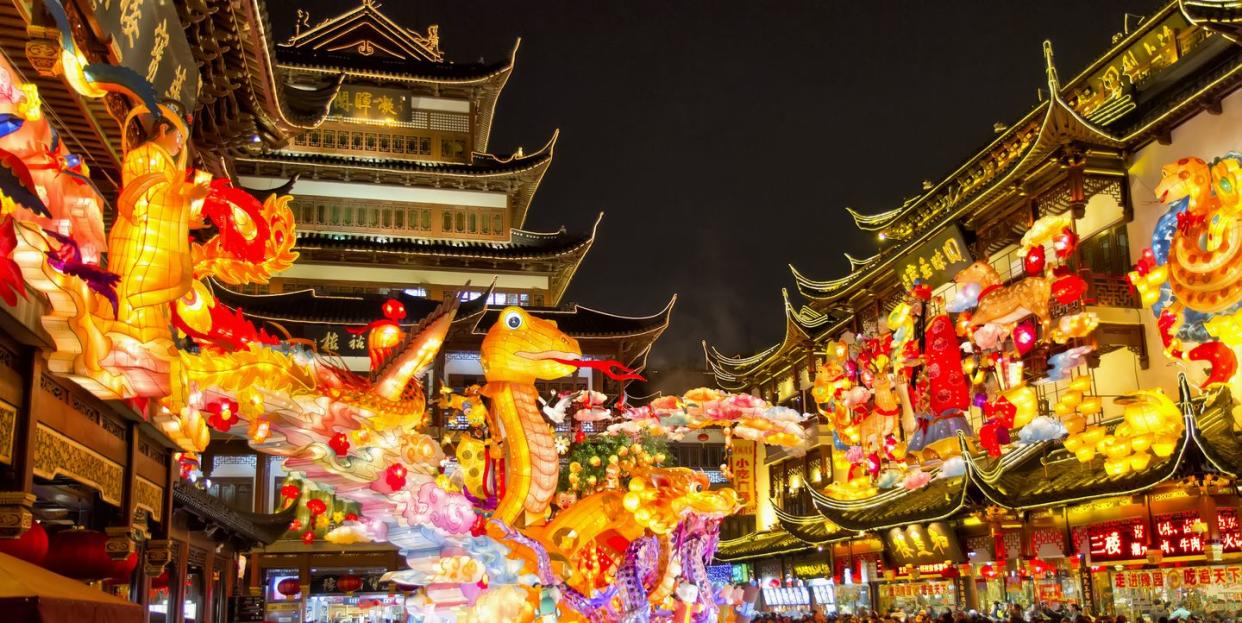Everything To Know About How To Celebrate The Upcoming Lunar New Year

When we think of the "holiday season," we may only think of the holidays we celebrate ourselves. But people all over the world have different holiday-season traditions, and it's important to be aware of these celebrations. This is why we're diving deep into the Lunar New Year—what it is and what traditions accompany the holiday.
What is the Lunar New Year?
The Lunar New Year, known as Spring Festival in some parts of the world, is the observance of the start of a new year using the lunisolar calendar. It's a tradition celebrated in China and several other Asian countries like South Korea and Vietnam. A lunar year includes 12 full cycles of the moon and is around 354 days long, although sometimes an extra month is added to stay more in line with the solar year (the 365-day year you're likely familiar with). This added month is why the Lunar New Year takes place on a different day within that window each year.
When is the Lunar New Year this year?
This year, the Lunar New Year falls on Sunday, January 22, which marks the beginning of the year of the rabbit.
What does the Lunar New Year celebration entail?
Celebrations may vary from place to place, but in China, the Lunar New Year is a 15-day occasion that kicks off with a family feast. People often travel from far and wide to participate in these festivities with their loved ones.
There are quite a few traditional foods eaten during the holiday like nian gao (a new year rice cake), whole fish, whole chicken, dumplings, tangyuan (sweet rice balls), braised shiitake mushrooms, tangerines, and more. The whole fish and whole chicken are meant to symbolize the values of unity and abundance that are integral to the Lunar New Year holiday.
What are the values and superstitions of the Lunar New Year?
Fortune, happiness, and health are the three overarching themes of the Lunar New Year. Carrying over good fortune into the new year and attracting good luck leads to some superstitions in different cultures too. In some families, it is thought that you should avoid crying, using scissors, changing your hair style, and wearing black and white, as these behaviors are associated with sadness, severing connections, and mourning—all emotions that should not be brought into the start of a new year!
Instead, many people wear red for good luck, pay off their debts to start the year with a clean slate, and even avoid doing their laundry, washing their hair, or sweeping their floors for a few days as to not get rid of the good fortune following their celebrations.
What are some traditions of Lunar New Year?
If you participate in Lunar New Year festivals, you will likely see a calligraphy character displayed on a square of red paper and hung in a diamond shape. The character is 福 [fú], which means good luck and is hung upside to symbolize good luck pouring down on you.
You may also see red envelopes full of money, which are known as lì xì in Vietnamese or hóngbāo in Mandarin. In China, these are traditionally gifted from an older person or parent to children, or anyone who's unmarried. The money is meant to ward off any evil spirits. Firecrackers and confetti poppers are also a common decoration and tradition for festivals related to the Lunar New Year. Perhaps one of the most common images you may see at Lunar New Year festivals are those of the Lion Dance and Dragon Dance. These displays include people in costume or puppeteers that put on the show for viewers.
You Might Also Like
